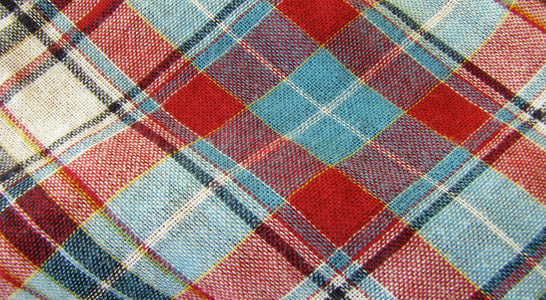
National Skirt Day
Flowing garments that dance with every step, expressing individual style and embracing comfort while adding a touch of effortless elegance.
There’s been a mystery that has eluded men throughout the ages, one of a simple turn of phrase and garment of typically feminine attire.
What, exactly, is the difference between a dress and a skirt? Most men simply have no idea, but National Skirt Day is here to change all that!
With the spreading of awareness tied to National Skirt Day, men and women alike will know where the difference between a skirt and a dress lay. Are you ready to have your knowledge expanded and impress your girlfriend with your new-found knowledge? We know you are!
Learn About National Skirt Day
If you look into the wardrobe of any woman (not that you should ever do this without permission!), you’re bound to notice several beautiful skirts.
Skirts have been worn since prehistoric times. This means that you could wear a skirt before you could make one on a stitching machine.
Of course, styles have definitely changed over the years. We’re sure the mini skirts that are popular today wouldn’t have been such a hit back in the day! However, not matter what style of skirt is your go-to, we can all appreciate the beauty of this garment.
National Skirt Day gives you the perfect opportunity to pull your favorite skirt out of your closet and wear it in style. A lot of women like to treat themselves to a new skirt on this day.
Any excuse to go shopping, right? There are so many different styles of skirts to choose from today as well. Skirts tend to be split up based on their length, i.e. mini, midi, or maxi.
However, you then have a whole host of other design consideration. From tulle skirts to leather skirts; there is something for everyone.
History of National Skirt Day
First a bit of history on the skirt, it’s far older than you might imagine! The oldest known skirt was woven from straw, and was discovered in Armenia, and was known to have been worn by men and women alike.
This was just the beginning of a long and storied history of a garment to shock and amaze people throughout the world.
So what’s a skirt you ask? Why, it’s a garment that hangs from the waist down, and can most often be identified by the fashionably challenged as “That bit of cloth what hangs from the waist down on a dress, if there were no ‘top-part’ to the dress.”
The most shocking of all skirts, the mini-skirts, has a surprisingly long history. Mini-skirts are known as those that just barely cover the buttocks, and were first worn by the Don Quan Mian culture in medieval times.
On the other end of the spectrum is the massive and voluminous skirts that existed in various cultures, sometimes with a diameter of 3 meters around the base. Skirts have certainly seen their share of range, haven’t they?
But why “National Skirt Day”? This is in part due to a film known as La Journée de la jupe, during which a “skirt day” was proposed in response to the cultural restrictions of the setting of the film.
Such a request was formally put to the French Minister of Education, wherein all women would be permitted to wear skirts to school.
How to Celebrate National Skirt Day
Pretty simple, as you might imagine! Male or female, dig into your wardrobe (or your partner’s!) and find a skirt to wear, and go about your day adorned in it.
If you really want to kick it up a notch, you can design and sew your own special skirt for the day, or simply adorn one with buttons and other accessories to really strut your own personal style.
Another way to celebrate National Skirt Day is by wearing a novelty skirt. If you take a look online, you will see that there are many different novelty skirts that you can purchase today.
This includes skirts that are based on different eras, as well as skirts that are decorated based on cartoon characters. Why not add a little bit of fun to your wardrobe on National Skirt Day and wear something that no one would expect you to?
You can also spend some time learning about the skirt and the history of this garment. You will be fascinated to discover how skirts have developed over the years, as well as the different trends that were loved throughout different eras.
The skirt can be traced back to Ancient Egypt, and it was actually men who wore them, not women! They were called the Shendyt, and they were basically a wraparound skirt that was created using flax – a type of linen that was locally sourced. The airy, lightweight material was ideal for the hot and humid weather in Egypt.
You will be able to see plenty of photographs of skirts throughout the ages. In the Middle Ages, fuller skirts were worn and they were often sewn to the bodice.
You then had less trimmed and less restrictive skirts in the 19th century, as women became more active. Of course, flash forward to the 20th century and we have seen some iconic looks, with the humble skirt being taken to new levels.
From A-line skirts to flapper style skirts, there are so many exciting trends that have made their mark over the past few decades.
Why not post some of your favorite skirt flashbacks on Instagram and get your friends involved too? You could even invite some loved ones around to have a few drinks with one necessity on the dress-code: wear a skirt!
National Skirt Day FAQs
Did men historically wear skirts?
Yes, men have worn skirts throughout history. In ancient Egypt, men donned linen skirts called shendyt.
Similarly, Scottish men have worn kilts for centuries, a tradition that continues today. These garments provided comfort and ease of movement.
What is “Rokjesdag” in the Netherlands?
“Rokjesdag,” or “Skirt Day,” marks the first warm day of spring when Dutch women wear skirts. Popularized by writer Martin Bril, it’s a celebrated cultural event.
How did the mini skirt become a fashion icon?
In the 1960s, designer Mary Quant introduced the mini skirt, revolutionizing women’s fashion. It symbolized freedom and youth, becoming a defining trend of the decade.
Are there traditional skirts in Indigenous cultures?
Yes, many Indigenous cultures have traditional skirts. For example, the ribbon skirt is significant in North American Indigenous communities, symbolizing identity and heritage.
What is the significance of the “liberation skirt” in Dutch history?
After World War II, Dutch women created “liberation skirts” from patchwork materials. These skirts symbolized unity and rebuilding in post-war Netherlands.
How do different cultures incorporate skirts into traditional attire?
Skirts feature prominently in various traditional outfits. In Japan, the kimono includes a skirt-like component. In India, women wear saris, which are draped to form a skirt.
Are there any myths or misconceptions about skirts?
A common misconception is that skirts are exclusively women’s attire. Historically and culturally, many societies have embraced skirts for all genders.
How did the pencil skirt gain popularity?
Christian Dior introduced the pencil skirt in the 1950s as part of his “H-line” collection. Its sleek design quickly became a wardrobe staple.
What is the origin of the skort?
The skort, a blend of skirt and shorts, emerged in the 19th century. It allowed women to engage in activities like cycling while maintaining modesty.
How do modern designers reinterpret traditional skirts?
Contemporary designers blend traditional elements with modern aesthetics.
For instance, ribbon skirts now feature in high-fashion collections, honoring heritage while appealing to current trends.
Also on ...
View all holidaysNational Mario Day
Join this iconic Italian plumber on his adventures through fantastic worlds, battling fierce enemies and saving the Princess!
International Wig Day
Instantly transform your look with versatile hairpieces, offering endless style options for that effortlessly chic and ever-changing vibe.
International Day Of Awesomeness
Rocking life with a confident attitude, spreading positivity, and making everyday situations shine - that's the essence of pure awesomeness!
We think you may also like...
Plaidurday
Timeless fashion and even more timeless warmth, break out your plaid on Plaidurday for a fashionable, cozy day in one of the world’s most popular patterns.
National Bikini Day
Hit the beach or lay out in the sun in your bikini on the anniversary of the invention of this ever-popular two-piece swimsuit in 1946. Don’t forget sunscreen!
National Umbrella Day
Be prepared for any weather with this must-have accessory! It's lightweight, colorful, and functional. Say goodbye to getting soaked and hello to style.
National Comfy Day
Wrapping yourself up in a warm cocoon, and snuggling with your favorite book or movie is what makes life worth living.








